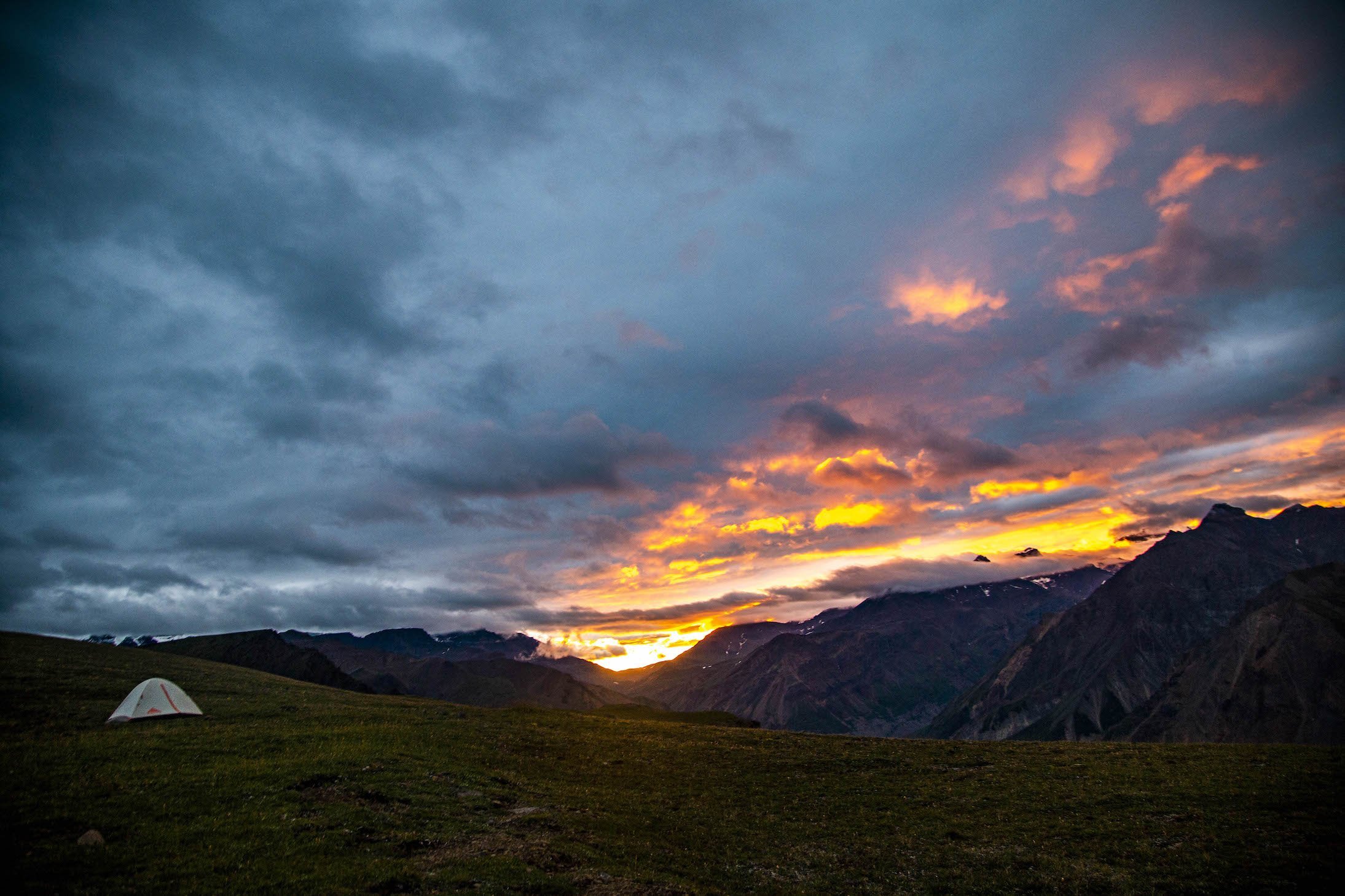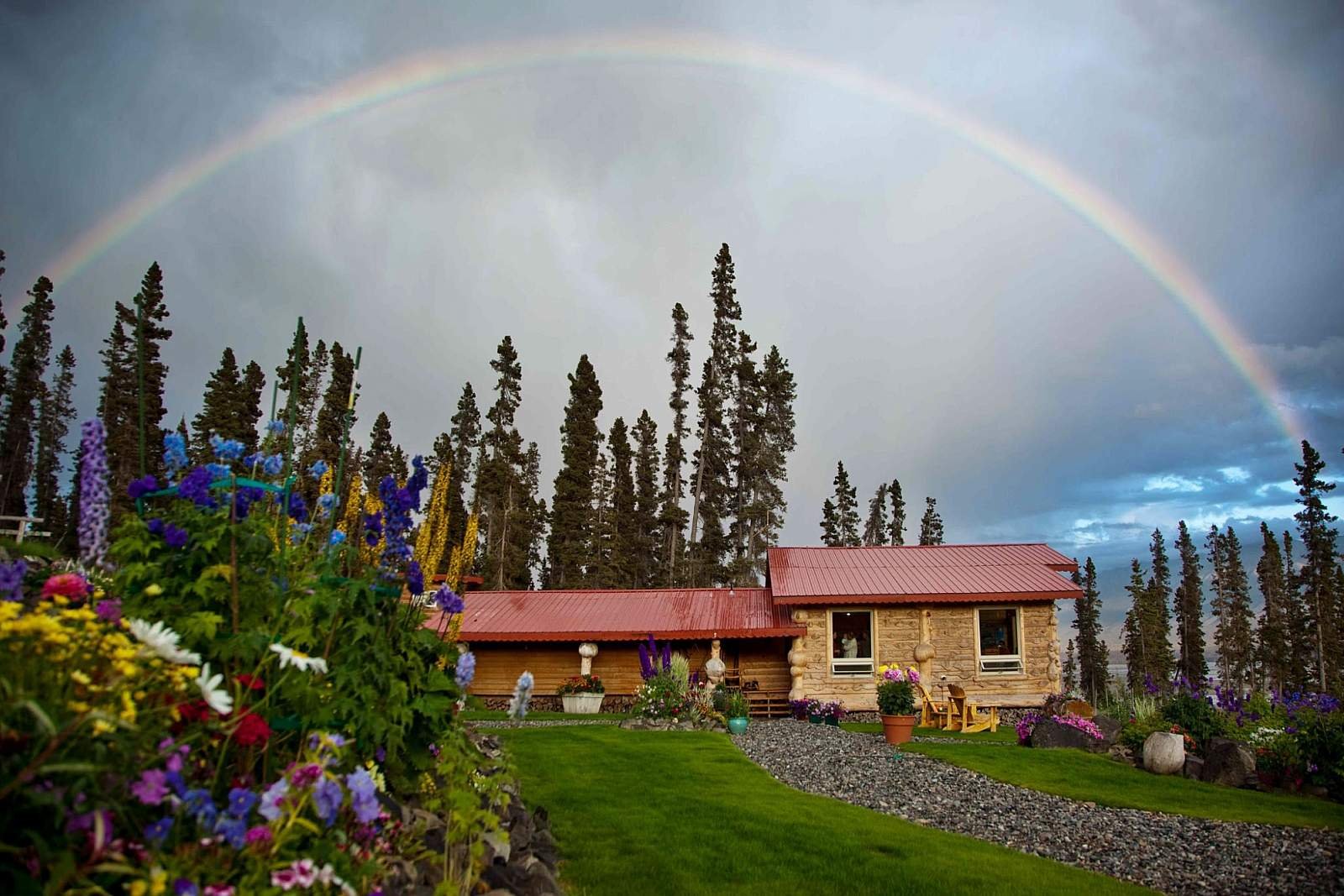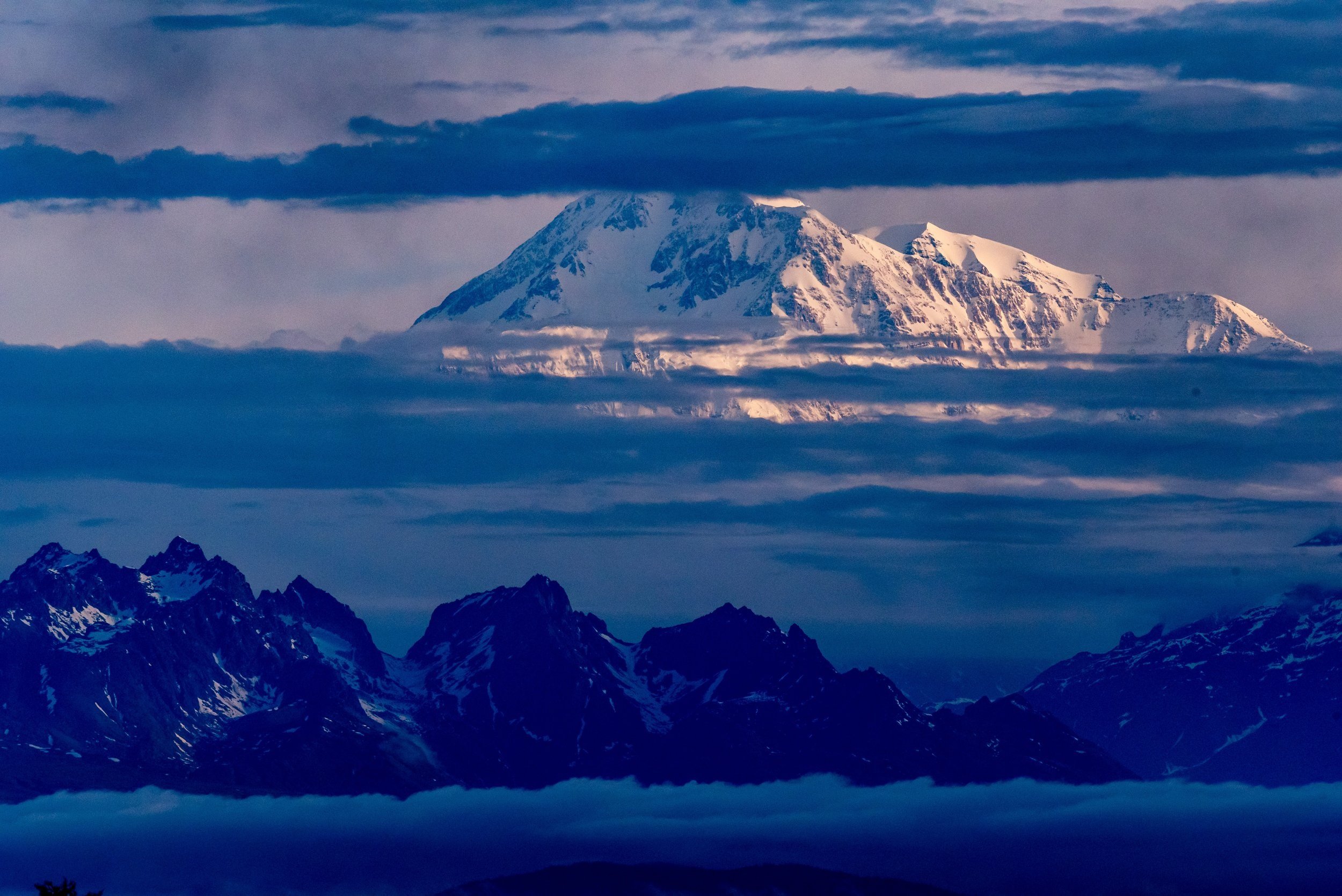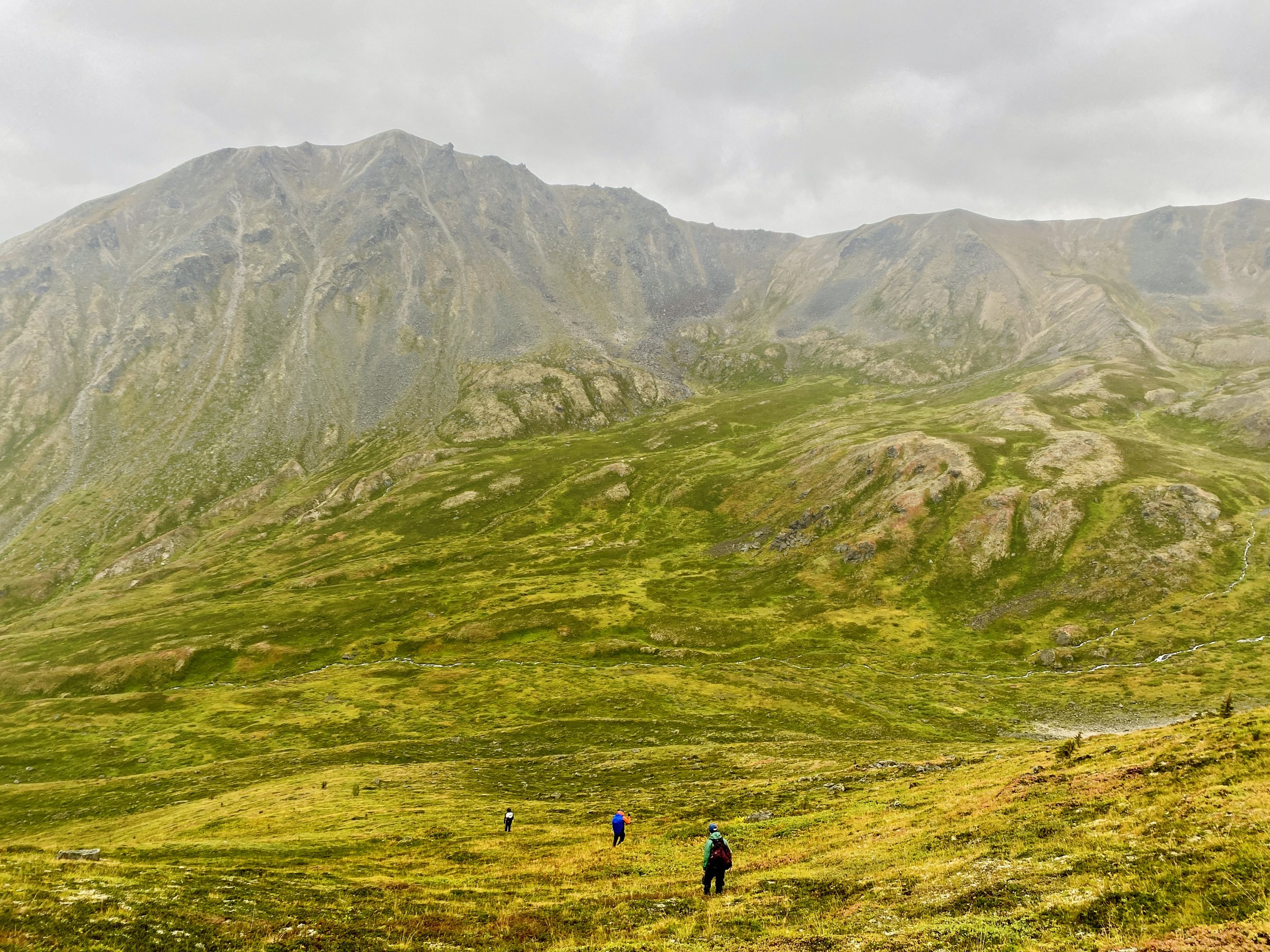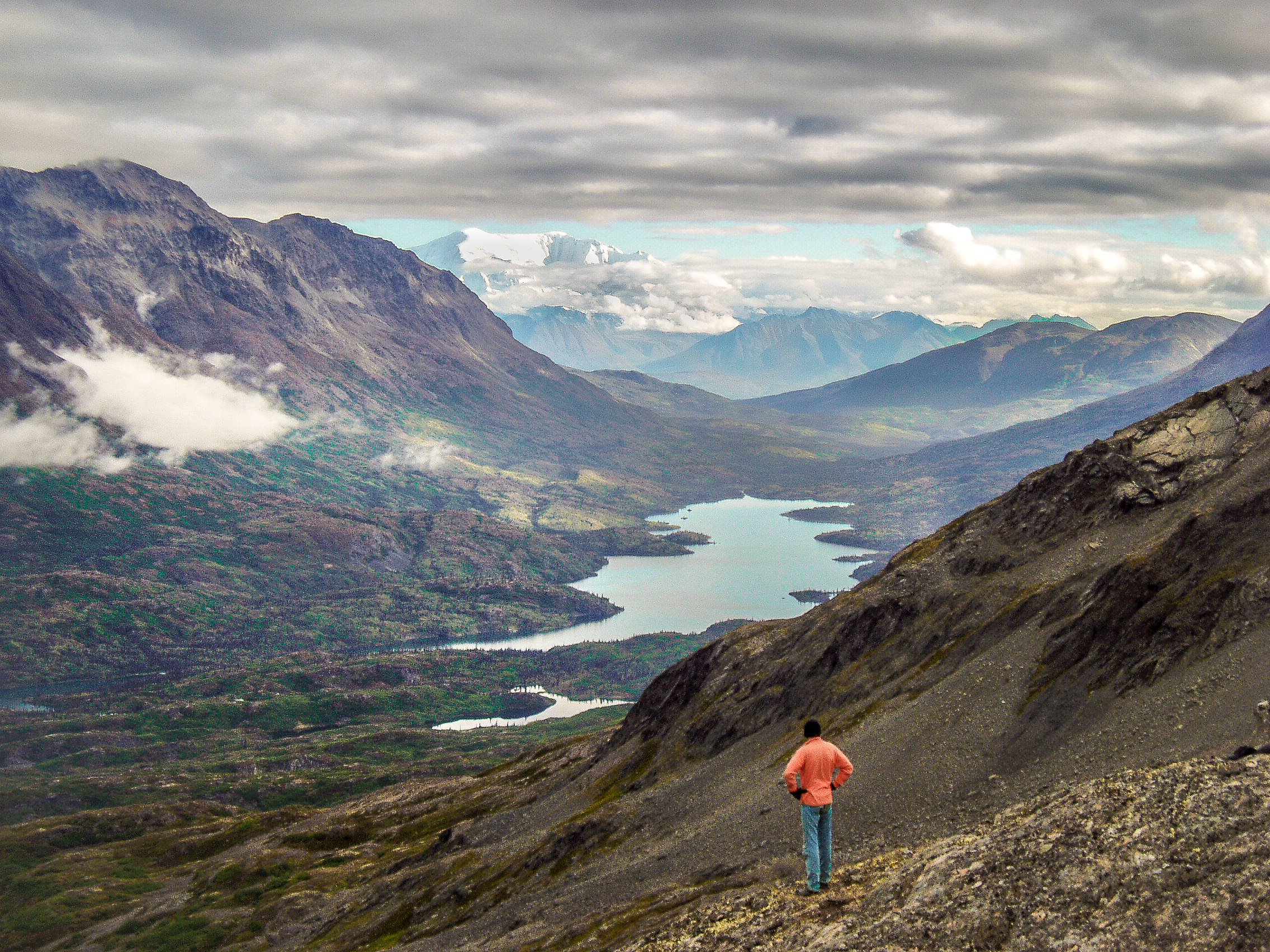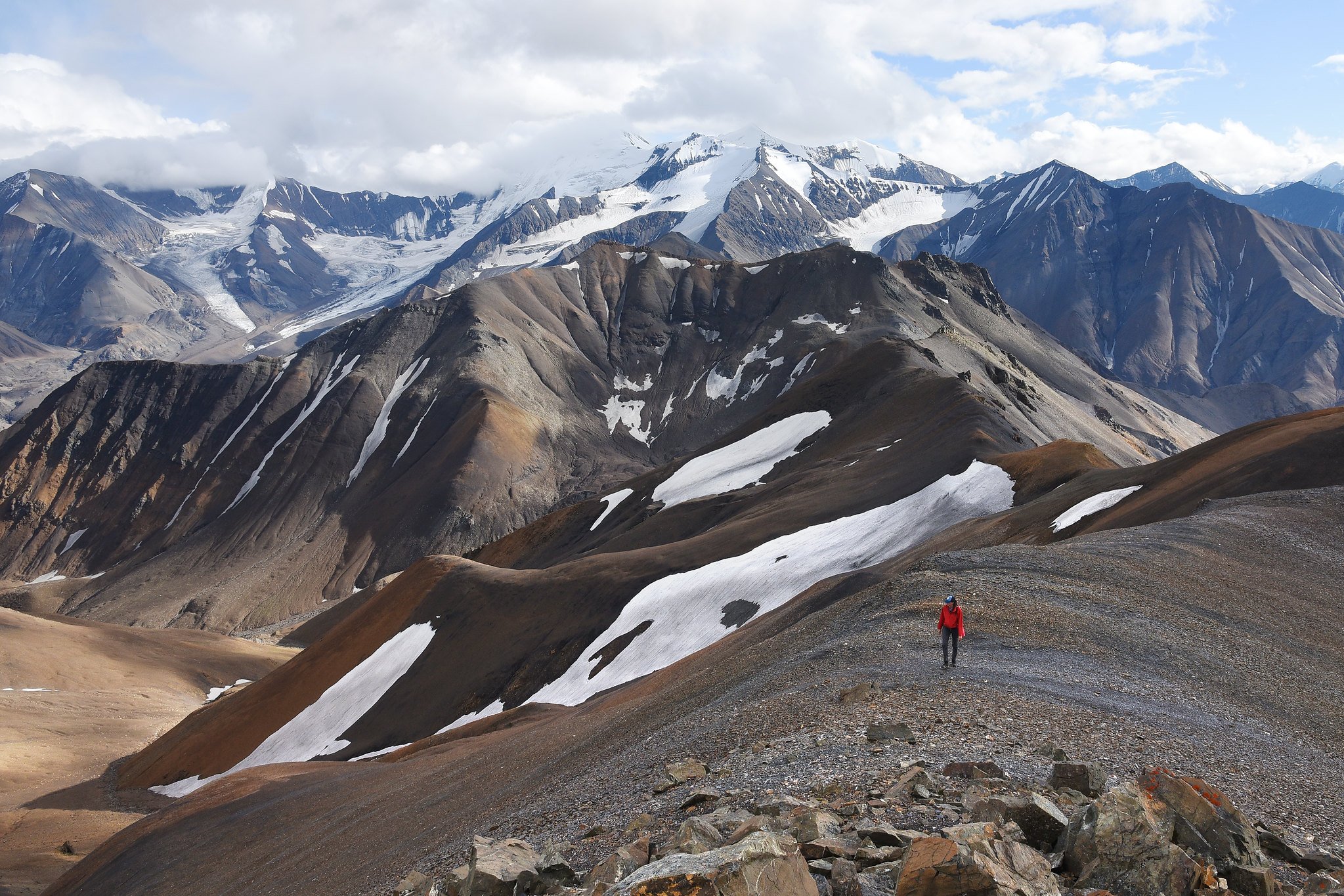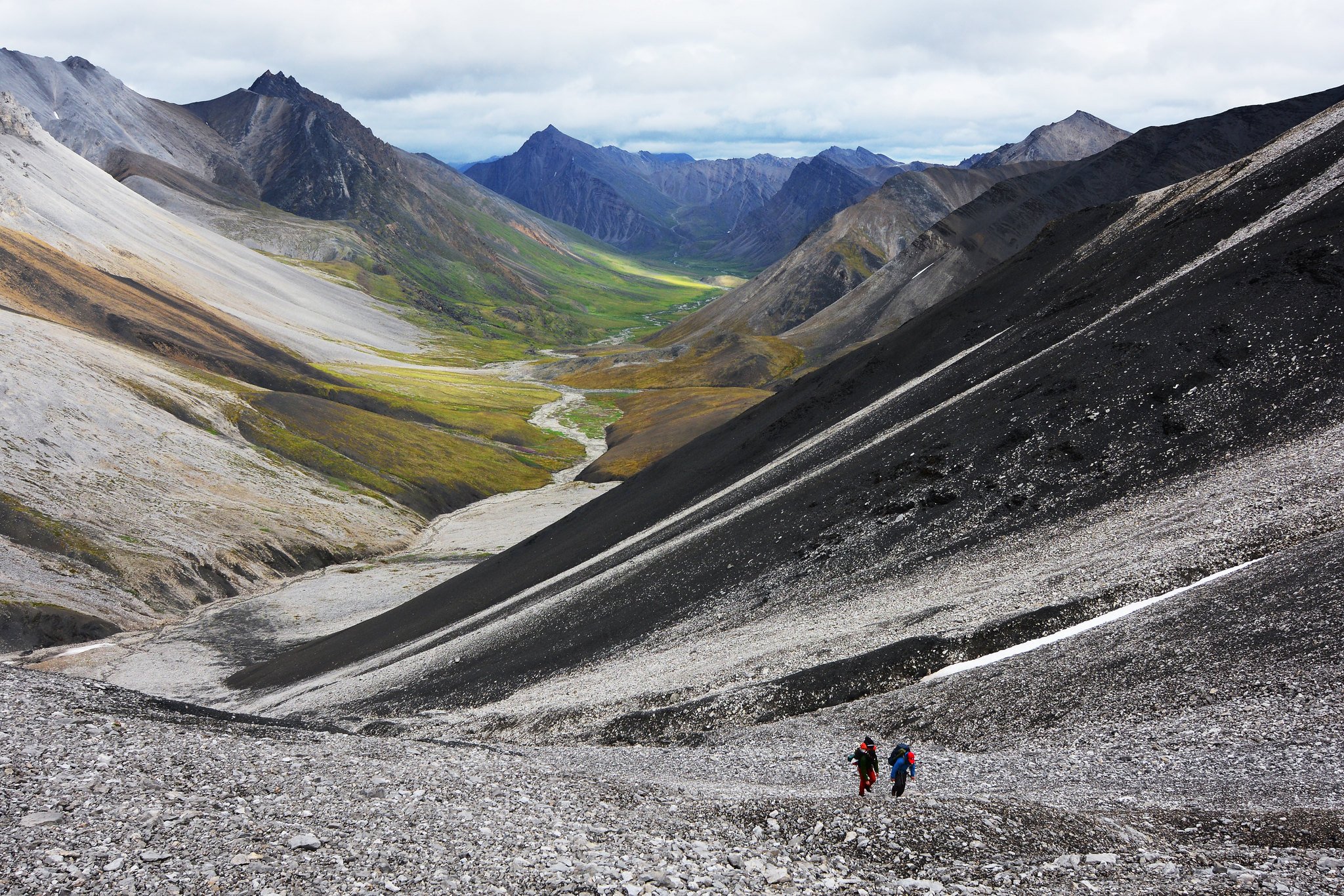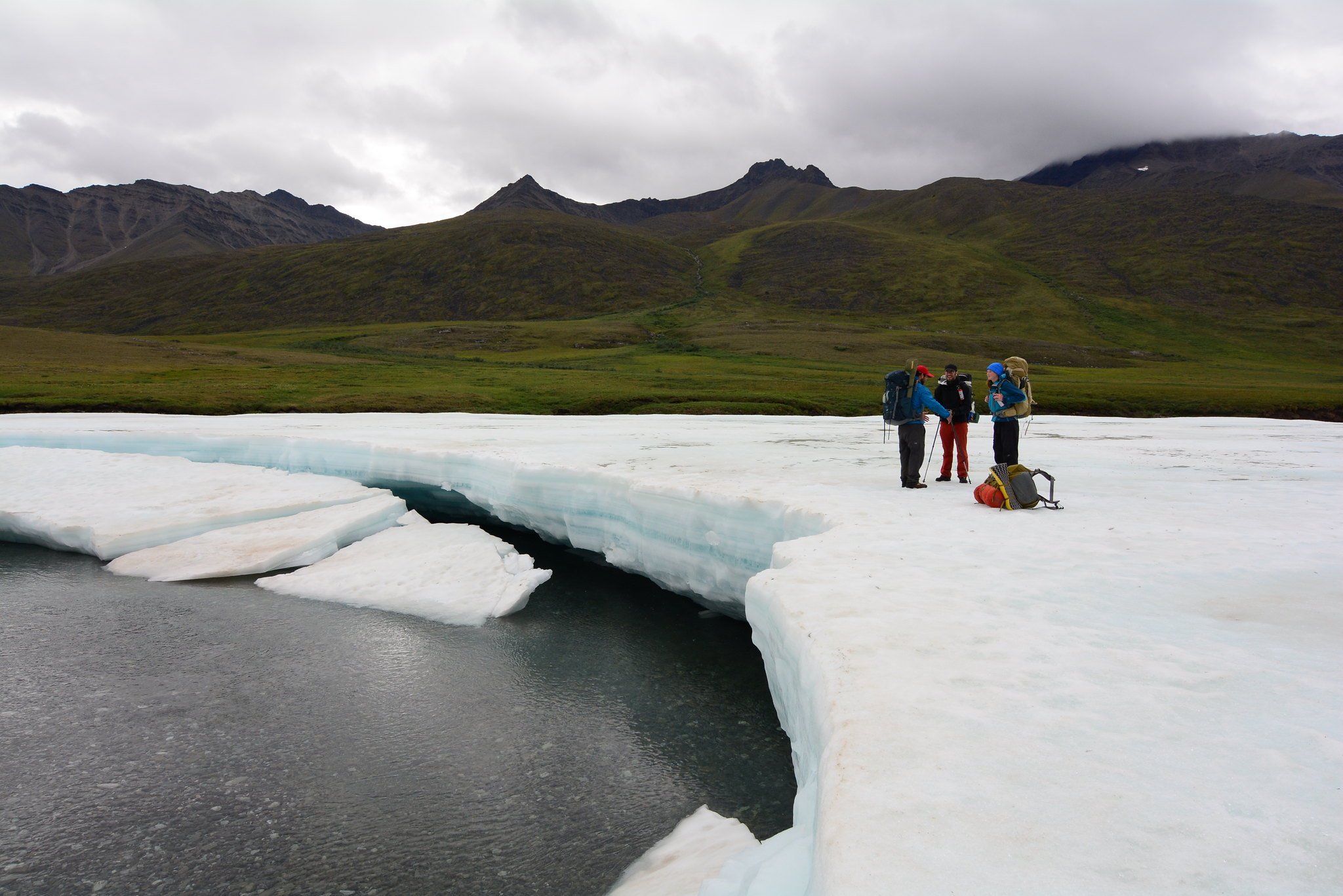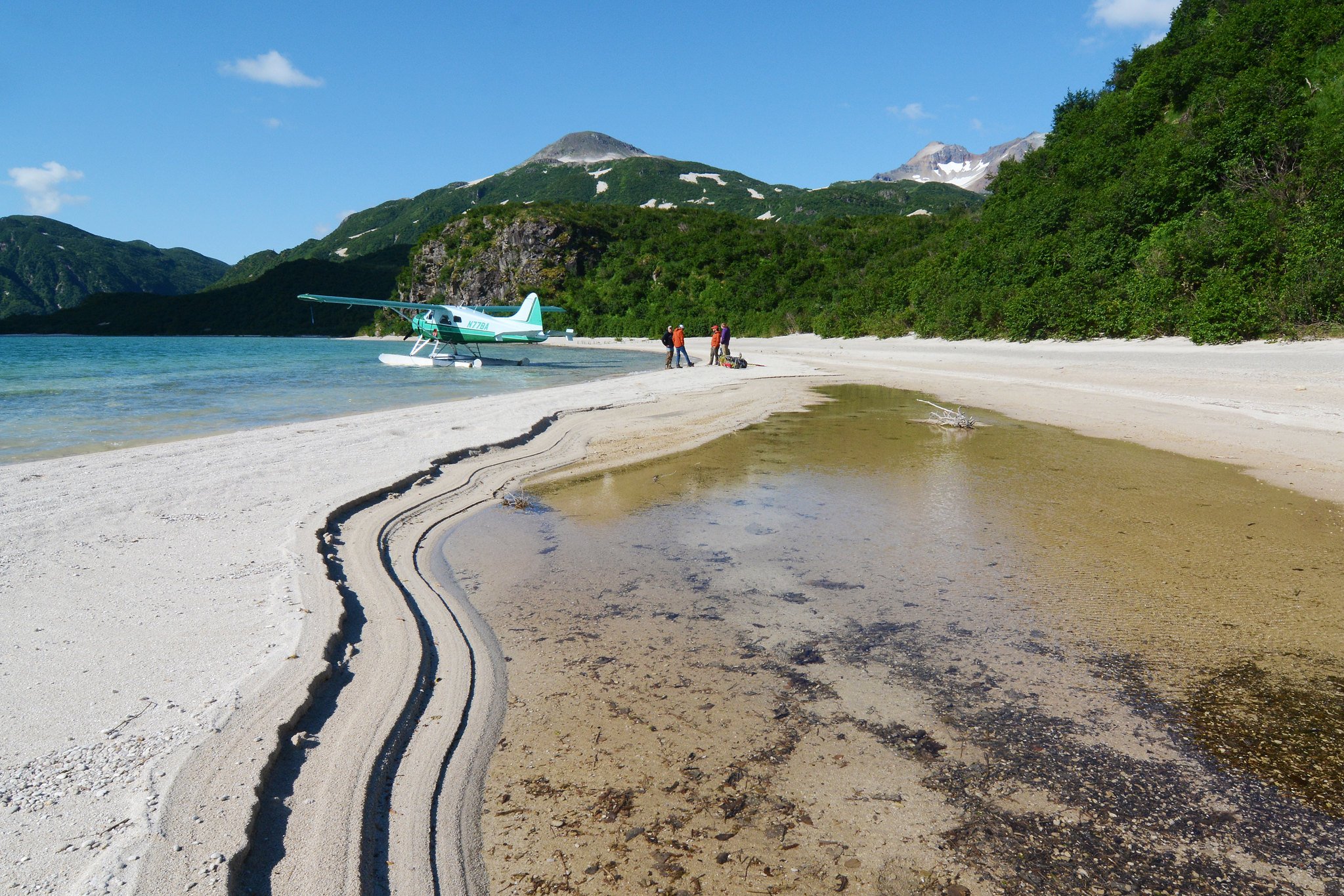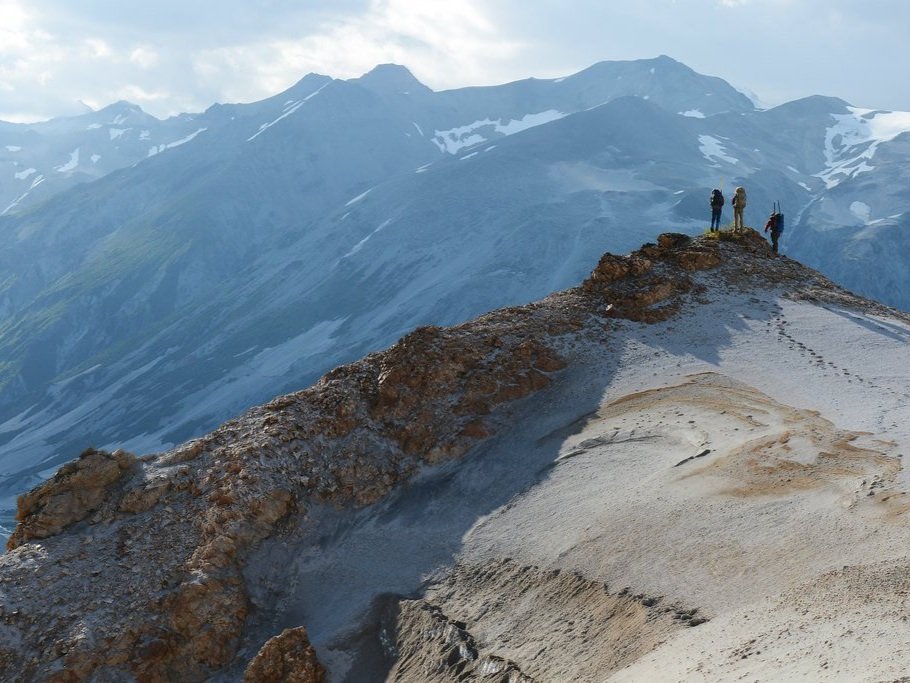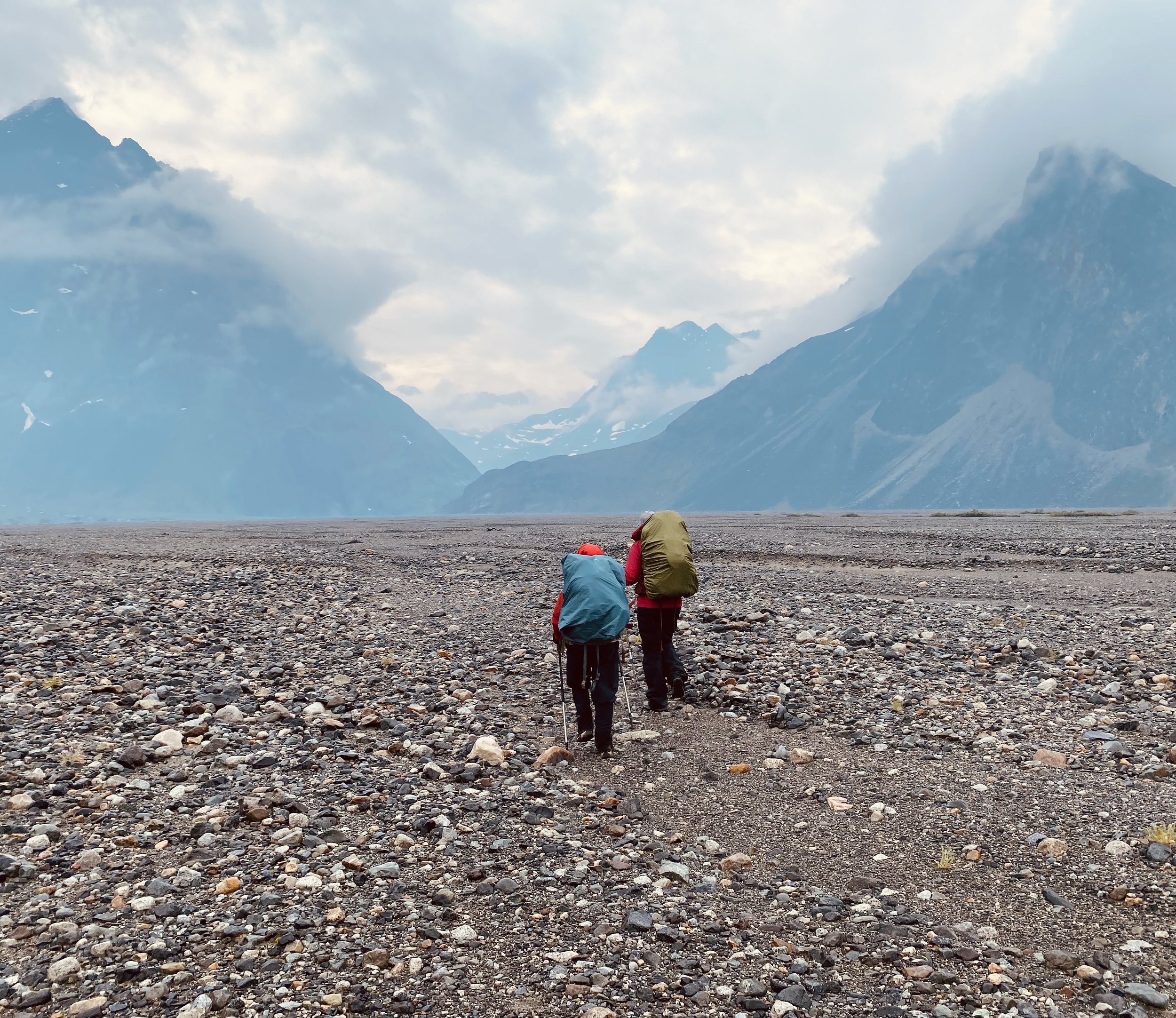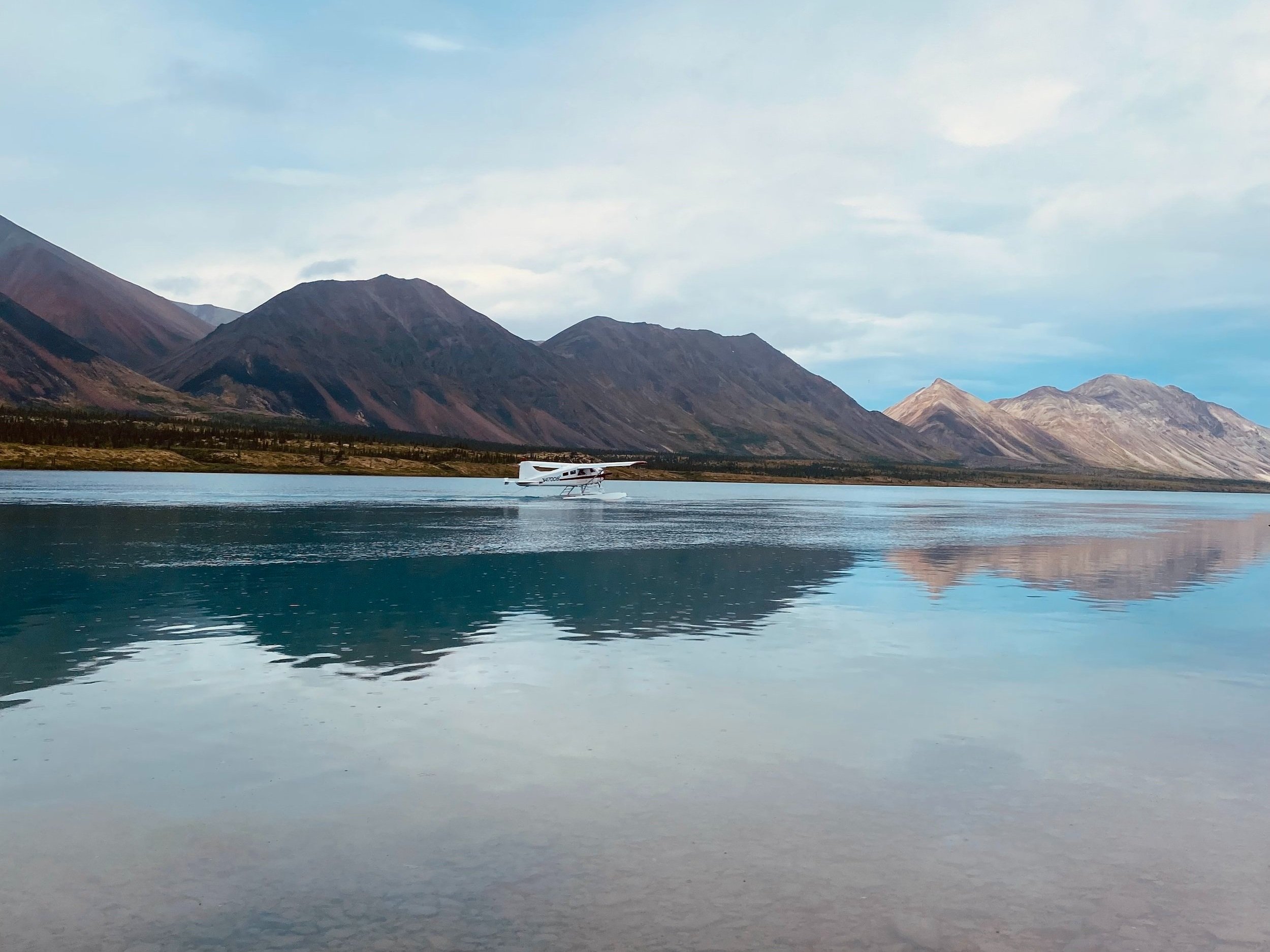Alaska Backpacking Trips, Tours, and Guides: How to chose the right one for you.
TABLE OF CONTENTS
Part 1: What, When, Where, How?
Weather & Season
What style of trip is right for me?
Where to go? Alaska is huge!
Part 2: Who! How to chose a backpacking guide service.
Style & Experience
Price
Reviews
TL;DR Summary
Dreaming of going on a guided backpacking trip in Alaska? It’s a massive place and there’s a ton of different trips, tours, and companies to chose from. In this post, we’ll talk through your options and things you should consider when picking where to go, what trip to do, and what guiding outfit to go with.
We’ll talk about different locations, weather and season, price, what style of trip you might want to go on and things to look for in a guide company. There’s a lot more to Alaska than just Denali!
Part 1: What, When, Where, How, Alaska Backpacking Trips.
Part 2: Who! i.e What you should look for in a backpacking guide or guide company.
If you’re considering an unguided trip, there will likely still be some gems in here for you… or check out our location specific guides to Alaska like this one to Wrangell St. Elias National Park.
WHEN TO BACKPACK IN ALASKA?
Summer
May: Still early season and quite rainy. Snow at most elevations.
June: This is technically the least rainy month in most of Alaska. In lower elevations, mid to late June is perfect. In upper elevations you’ll still encounter lots of snow.
July: A good balance of less rain and no snow in most of Alaska. The last week of june and the first three weeks of July are prime weather in Alaska but also the busiest and most expensive time to travel.
August 1 - 15: The first two weeks of august are still summer, the second two weeks of August can give fall to winter conditions particularly at the upper elevations.
Autumn
August 15-31: the second two weeks of August can give fall to winter conditions particularly at the upper elevations.
September: This month is rolling dice. If you’re lucky, you’ll have epic fall colors and cool dry temps. if you’re unlucky you’ll be in the first winter storms, wet, cold and cloudy. If traveling in September (or second two weeks of August) you need to be extra prepared to fight off hypothermia.
WINTER & Spring
October - April: Unless you're ready and excited for winter conditions, travel and camping, it’s best to avoid these months. On one hand, they provide a world of wonder… silence, peace, northern lights, and a magical austerity. But if you’re not 111% ready (or even if you are) these months have a good chance of breaking you down with the intense cold and long dark hours.
That being said, if you’re an experienced winter camper and skier, March, April and May provide epic conditions for ski touring, heliskiing, and ski mountaineering. Everything in Alaska will be cheaper during these months and you’ll experience Alaska more like a local.
WHAT STYLE OF TRIP IS RIGHT FOR ME?
There’s really four main types of backcountry trips commonly guided in Alaska:
Backpacking, Basecamp Hiking, Rafting & Multi-Sport trips, Lodge-Based Hiking Trips.
(In ascending order of cost L —> R)
Alaska Backpacking Trips
Backpacking trips in Alaska are, by default, more intense than backpacking trips in the lower 48 or most anywhere else in the world that has trails. Out here, you have to earn it. But the rewards are 1000% worth the effort. In truth, over a decade of guiding full time, I generally find that the harder people work on a trip, the higher they end up rating their experience.
That being said, backpacking off-trail, fording rivers, bushwhacking though Alder and camping in the most beautiful spots you’ve ever dreamed isn’t for everyone. For backpacking to be enjoyable you need to be in shape for the trip — some amount of training is essential for most folks.
Alaska Basecamping Trips
For folks who aren’t keen or aren’t able to cary much weight, basecamping provides an awesome option to be super immersed in the terrain with some more creature comfort.
On a typical basecamping trip, you’d fly in to the mountains and setup camp either right where you land, or within a mile or 2 of the landing strip. Each day you hike to your hearts content with light packs. Perhaps the greatest thing about basecamping is that you don’t have to breakdown and reset your camps each day. And generally you can bring heavier and nicer food.
Alaska Multi-Sport Trips
If you really want to spend some time on the water as well, as backpacking consider a multi-sport trip. They can be logistically intensive and are often far more expensive, but they do provide variety and a chance to rest the shoulders after carrying a pack. The coolest versions of these trips change from backpacking to rafting while still in the wilderness (without having to return to civilization). If opting for a multi-sport trip I recommend choosing no less than a 10 day trip. Otherwise you’re not really able to get into the rhythm in either section.
Alaska Lodge-Based Hiking Trips
Alaska is home to some absolutely stunning wilderness lodges. We wrote a post about our favorite top seven of them. These lodges allow you to live in absolute comfort out in absolute wilderness — a total rarity on this planet. Most of them cost 10k and above for 3-4 days, but if it’s in your budget it’s likely to be a trip you’ll remember fondly forever.
WHERE TO GO BACKPACKING IN ALASKA?
(Flip through the photos below to get a visual sense of the different places)
Most people when they thing Alaska they think Denali. It’s true, Denali National Park is incredible, but there’s so much more to the state! Where you want to experiecne backpacking in Alaska really comes down to a few things:
What landscape most resonates with you?
Above, you can see photos from the National Parks that are most easily accessed from either Anchorage or Fairbanks (the two major airports). It’s really worth researching photos of the different parks to get a feel for what landscape most excites you. They all have a different flavor.
Cost
If you’re on a budget, look into guided trips in the Talkeetnas or Denali State Park. Lots of people are drawn to the star power of the national parks, but in truth, the Talkeetnas hold some excellent backpacking. Sure the mountains are much smaller, but the views are still grand. And because you don’t need a plane to access the backpacking, the costs are way lower.
As a rough gauge, here’s a list of the major parks in order of the cost to run trips in those areas (1 = most expensive, 6 = least expensive). Most of this cost is due to plane access… some of it is due to how accessible they are from the major airports.
Aniakchak National Monument
Katmai National Park
Lake Clark National Park (Lake Clark, Neacola and Revelation Mountains)
Denali National Park
Wrangell St. Elias National Park
Gates of the Arctic National Park
When you can travel (season).
Aniakchak is just hard to get to and challenging any way you slice it. (July is best)
Katmai has a long season June - September.
Lake Clark (depending on your route) is relatively low elevation. Trips June through October work well)
Wrangell St. Elias has great options June - September.
Denali is pretty darn snowy until July and then gets real wintery by September.
Gates of the Arctic is perfect the last week of June, but notably buggy in August.
Crowds
Alaska is popping off these days. You’re still likely to have the mountains mostly to yourself no matter where you go, but it’s not the absolutely off the beaten path place it once was.
Consider avoiding the busiest areas during July (i.e Bomber traverse, The Wrangells hot spots like Iceberg Lake or The Goat Trail, or the Arrigetch Peaks in Gates of the Arctic.
PART 2
How to Chose an Alaska Backpacking Guide?
There’s a bunch of guide companies and backpacking tours in Alaska these days and it can be hard to discern the differences. Here’s some things to think about when comparing your options.
What’s their guest to guide ratio and how many people are on a single trip?
Some companies send 14 people into the field to maximize profit, some send 4 - 6 with 1 -2 guides. Over the years, we’ve found that the sweet spot is 6 guests and 1 - 2 guides or 8 guests and 2 guides at a maximum. When we go with 8 guests, we split up during the hiking day and regroup in the evenings. The size of the group can really impact your experience. Smaller groups tend to form deeper connections and more comraderie — and in truth this feeling of shared experience is often a highlight for people.
Are their guides qualified to guide you in remote terrain and do you know who your guide will be?
This is a big one! Your guides make or break your experience. And going into the AK backcountry is no joke, so you need to trust them fully. Many of the bigger guide companies hire guides for the summer and have super high turnover rates. With these companies you’re likely going out into the deep mountains with guides who maybe have a season of experience or sometimes not even that. All the guides we hire have 10+ years of experience, have a Wilderness First Responder or higher, and have an epic log of personal and professional adventures to back up their experience.
Do they have lots of good reviews from past participants?
Don’t just look at the reviews they put on their site. Check out google reviews or Trip Advisor to see unfiltered public opinion.
What kind of gear do they supply? Do they have fresh modern lightweight gear or will you be lugging around a 6lb tent? This makes a big difference in pack weight and your overall enjoyment.
After years of backpacking, we can tell you that a light pack almost always wins out. Being able to travel unencumbered is a great freedom. Many companies have old and outdated gear that weighs a ton. Some things we do to keep weight low: use a bear fence instead of bear canisters whenever possible (this is huge for weight but also for ease of packing your bag), use only newer models of Nemo lightweight tents, cary lots of dehydrated food and mix in fresh vegetables and treats to keep it deliciously light.
Same for food. Do they have excellent food while maintaining low weight (for backpacking trips)?
How expensive is the trip? What does that cost include? Do higher prices seem to align with higher value: lower group sizes, more boutique experience, etc.
Not just how expensive is it, but are higher cost trips worth it? At Indigo Alpine Guides our trips are often on the higher end of prices. What do you get for that? A super experienced guide team (we’ve climbed Denali, been to the South Pole, Spent 60 days mountaineering in Patagonia, etc.) and we all have high level remote medical training. In addition to having incredibly qualified guides you also get smaller groups, better accommodations, excellent gear, and a real adventurous trip — we’ll have real challenge and epic adventure in a relaxed and fun group culture.
What is the company style? Will you be dragged along like cattle and treated like children on a tight leash, or more like family and friends?
At Indigo, we treat our clients like family. Some companies, particularly the large companies around the middle of the season, treat their guests like objects. Find a company style that resonates with you.
In Summary
In Summary… there’s a lot of Alaska backpacking guides and tours to chose from. Here’s some important considerations:
Trip Type:
July is prime time. Consider going earlier or later to save on expense and have an even more remote experience.
There’s more to Alaska than Denali. Best thing is to scroll through photos of the major destinations and see what landscape appeals to you.
If you’re on a budget, look for trips that don’t involve plane access, like some trips in the Talkeetnas.
If you don’t want to cary a backpack, consider a basecamp hiking, rafting, or lodge-based trip.
Be ready for the real Alaska — there will be rain, bugs, and massive awe-inspiring views.
Guide Company:
How many people are on each trip?
Are they highly qualified?
Do they have epic reviews?
Do they have lightweight and newer gear and delicious food?
Where are they on the cost spectrum?
What’s the company style? Will you know who your guide is before you arrive?
Thanks for reading. Of course, if you’re interested in backpacking Alaska and have questions or want to sign up for one of our trips, don’t hesitate to reach out. We’re always happy to talk through ideas with folks.
Warmly,
Jack and the IAG Fam





